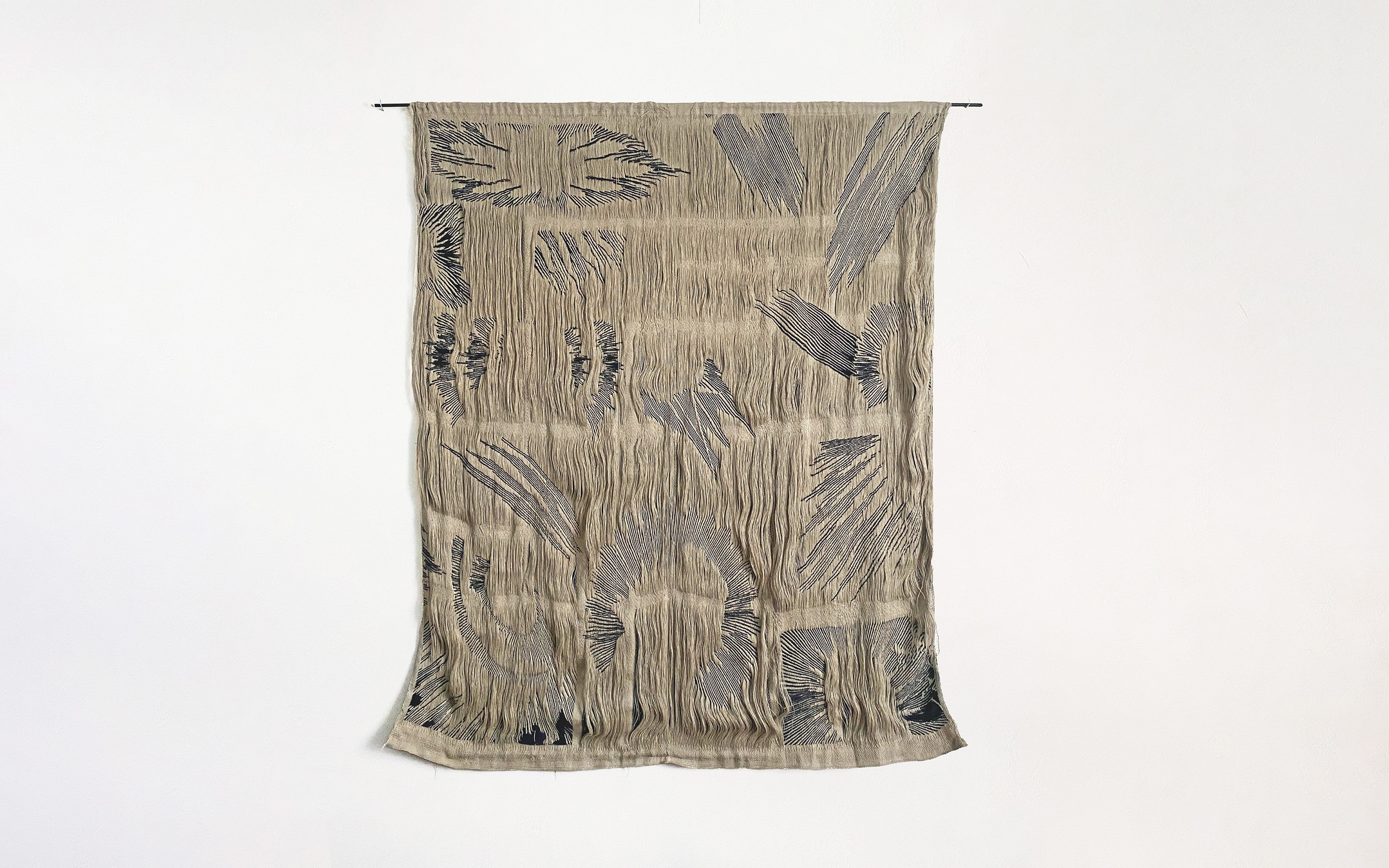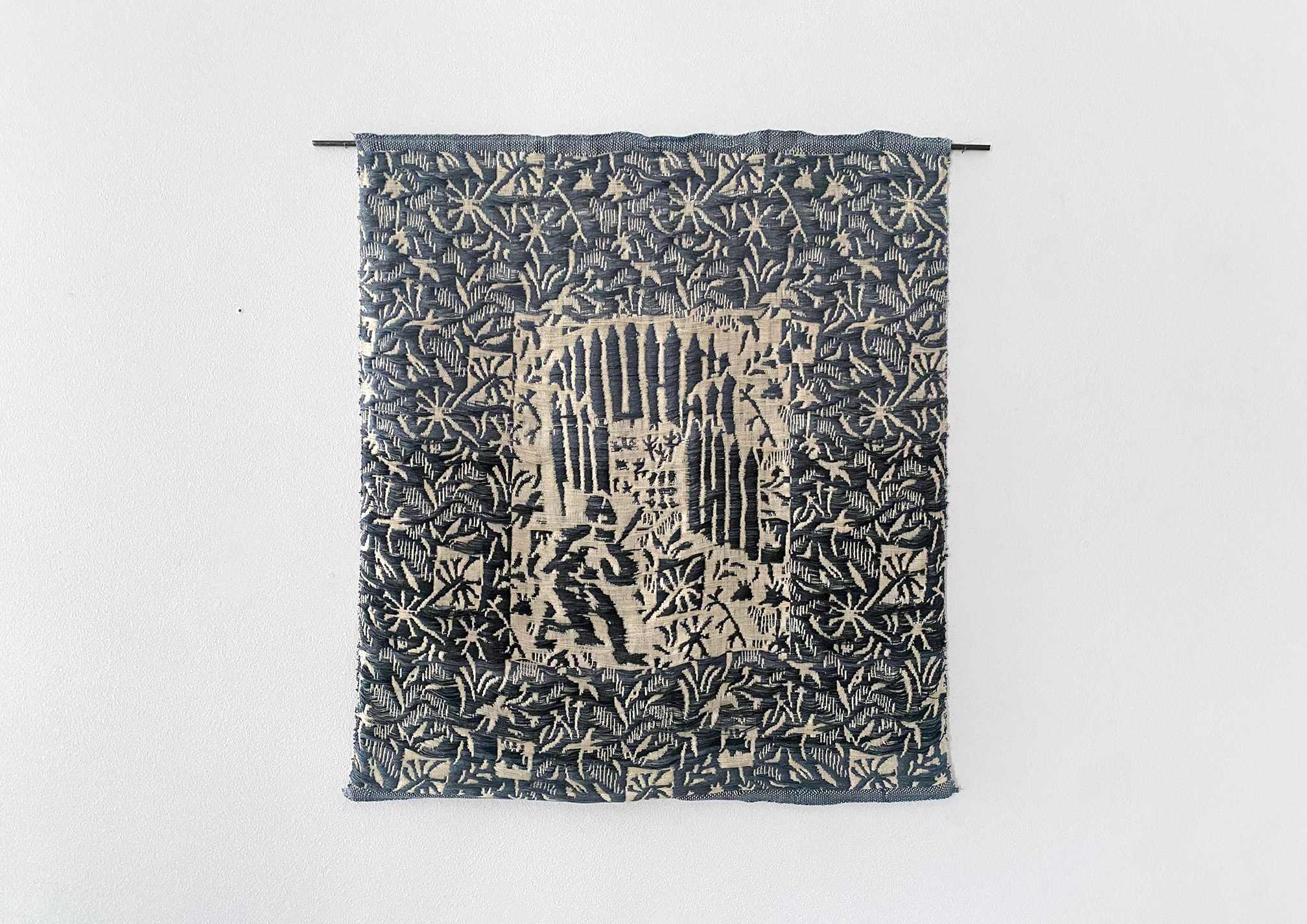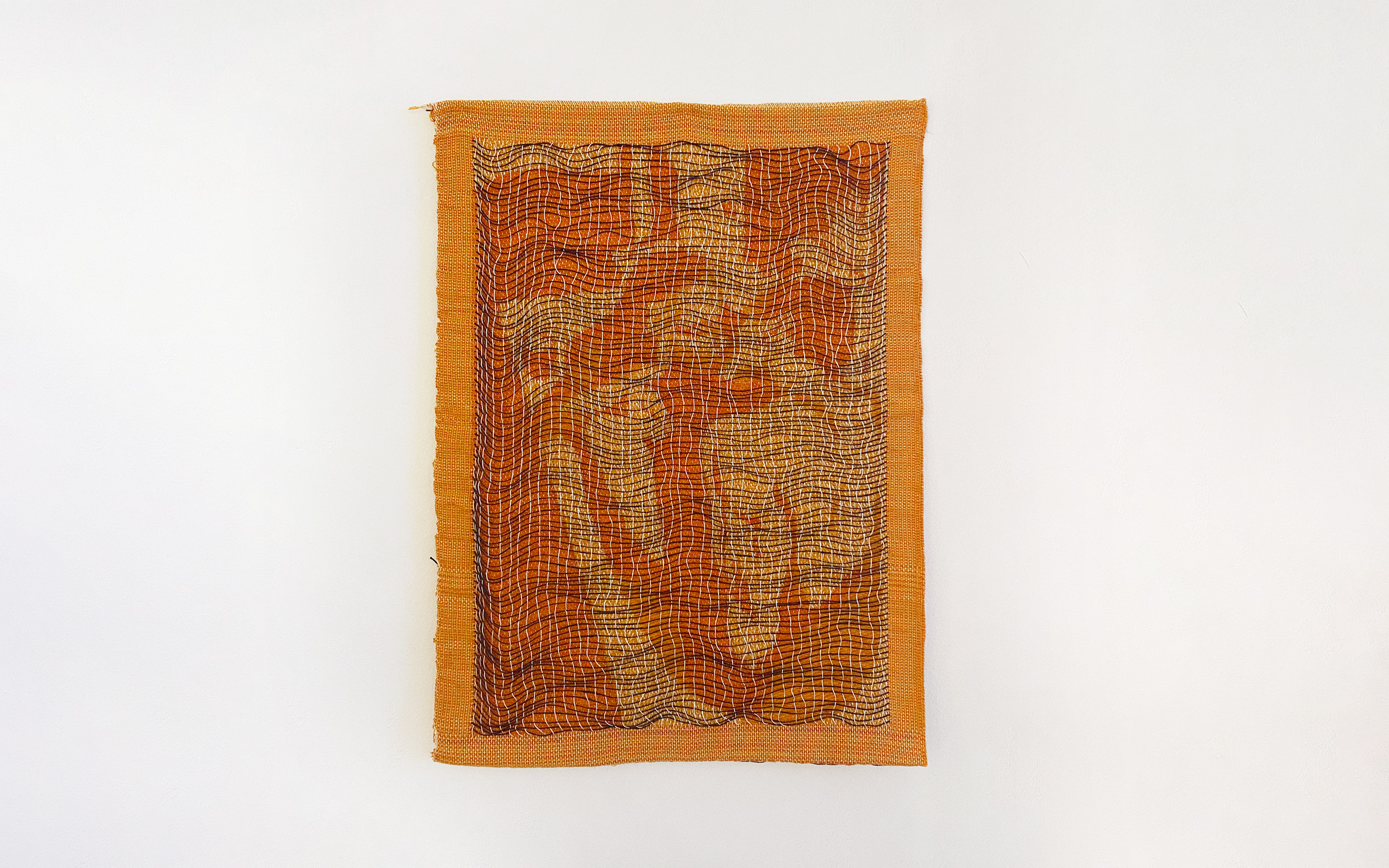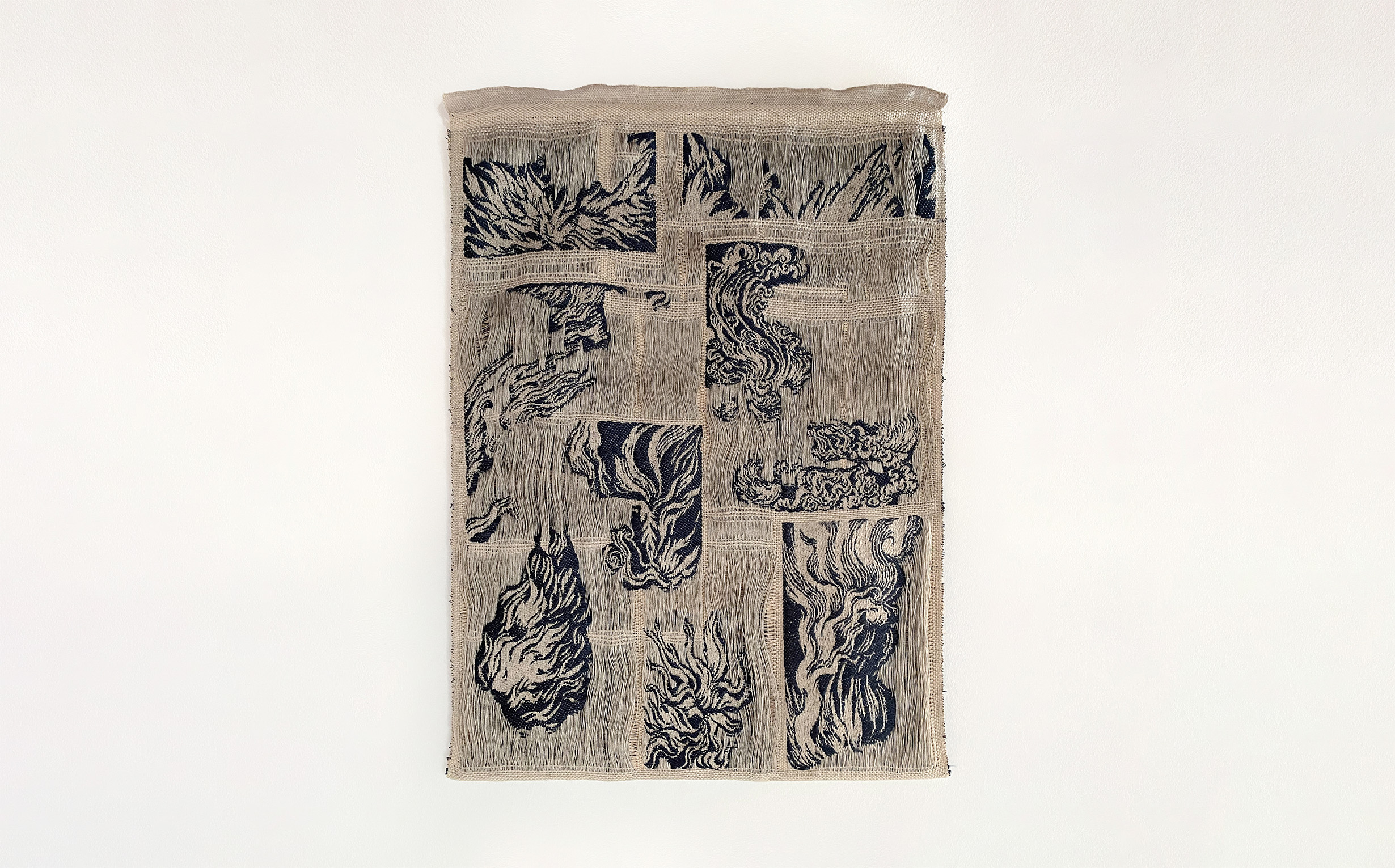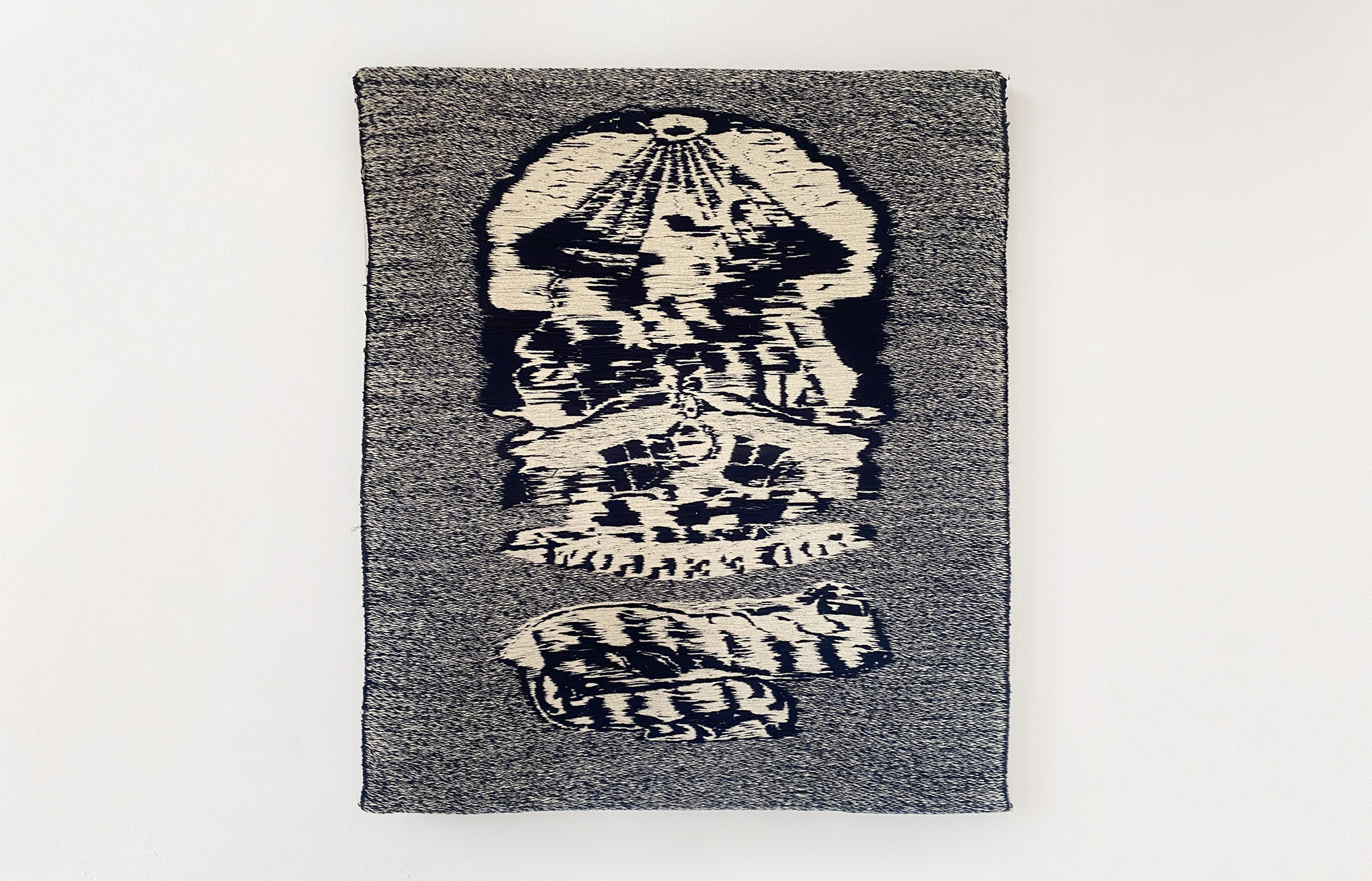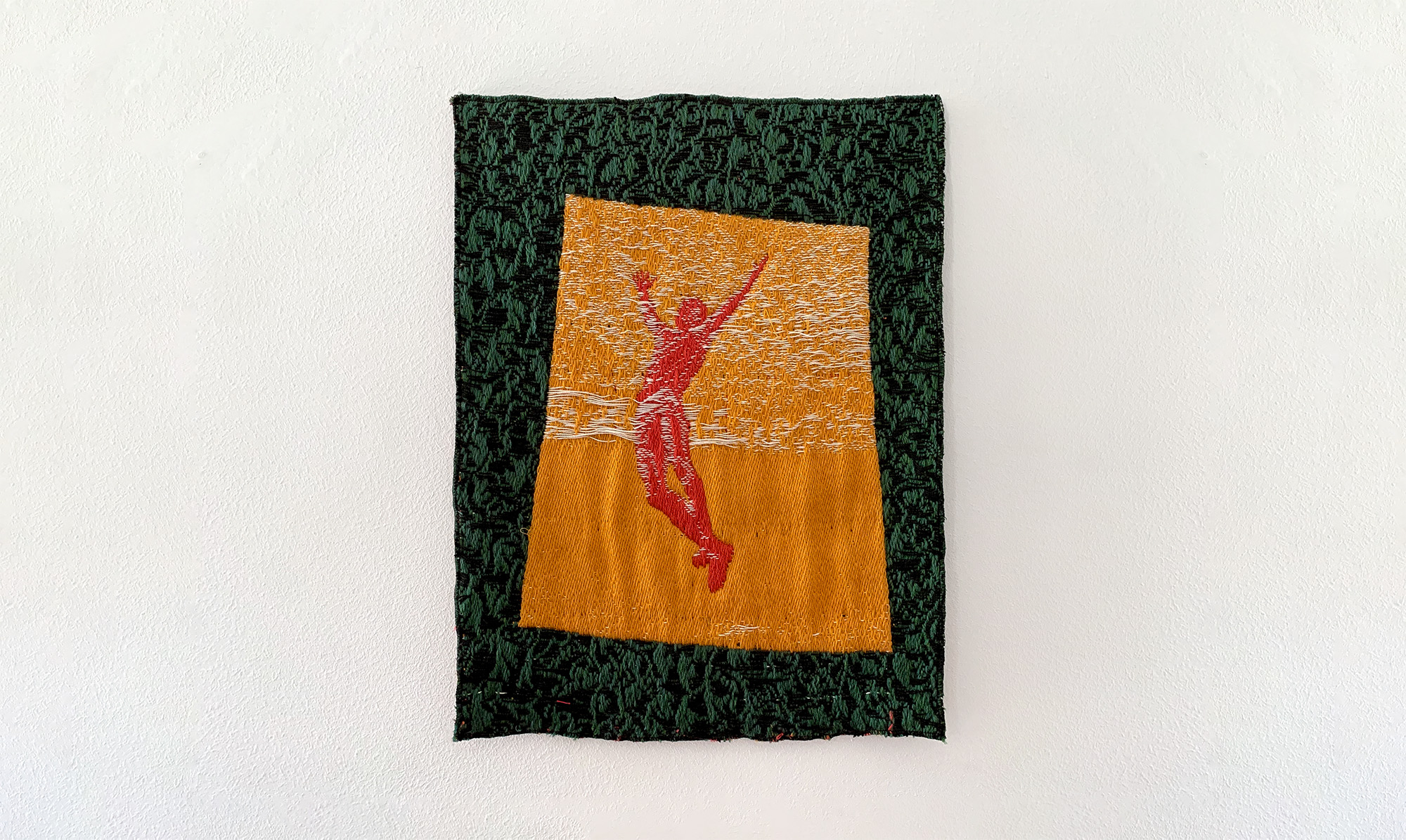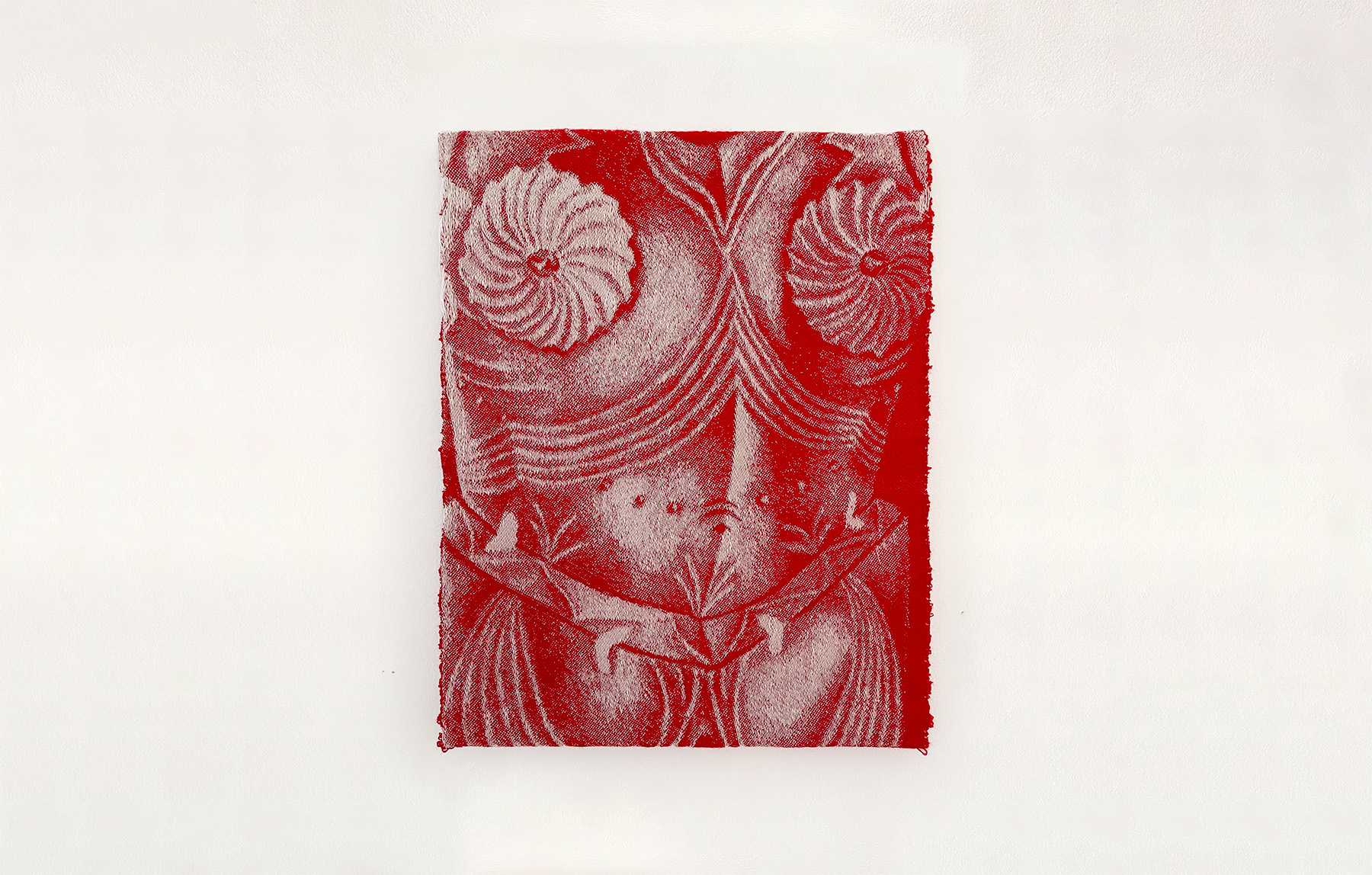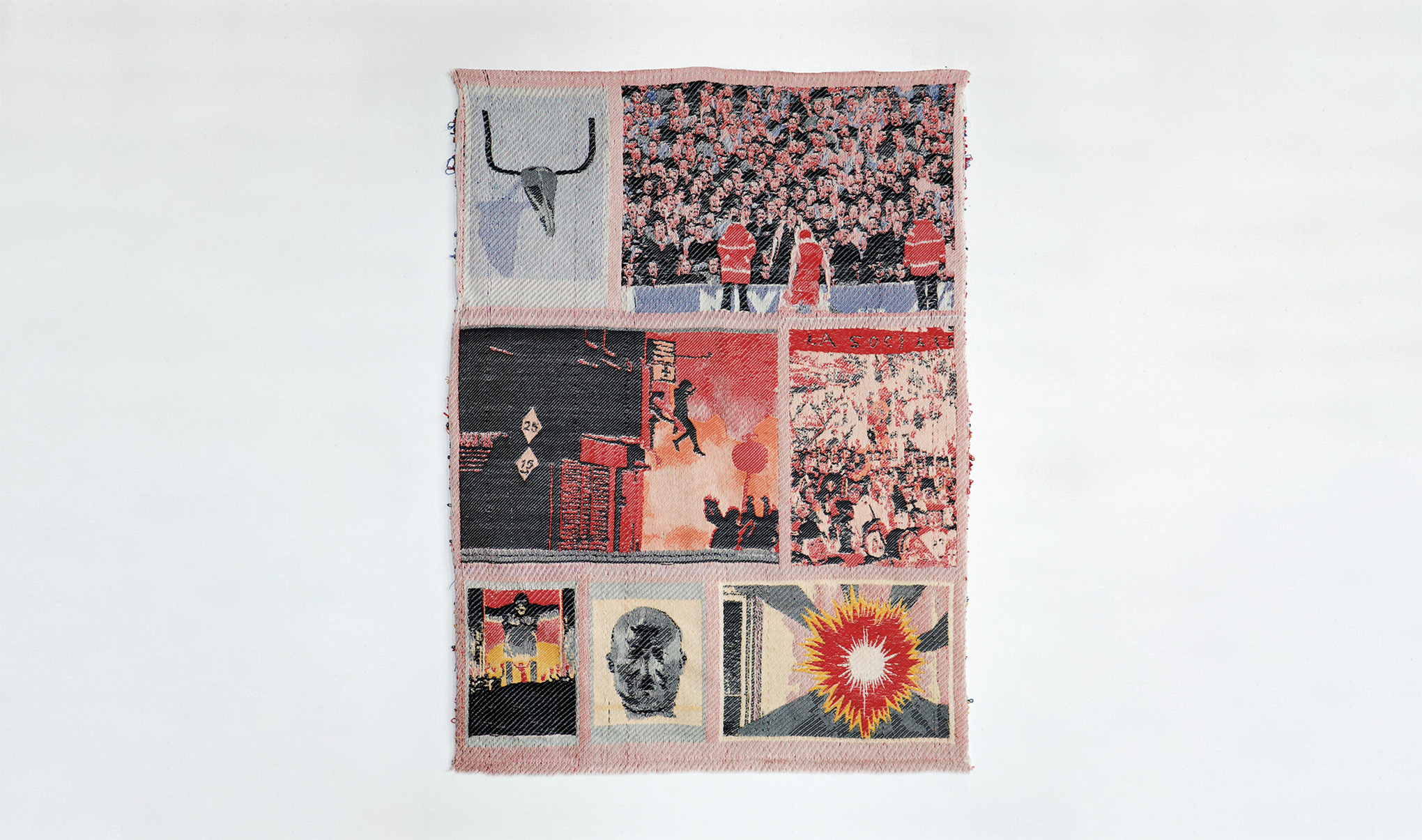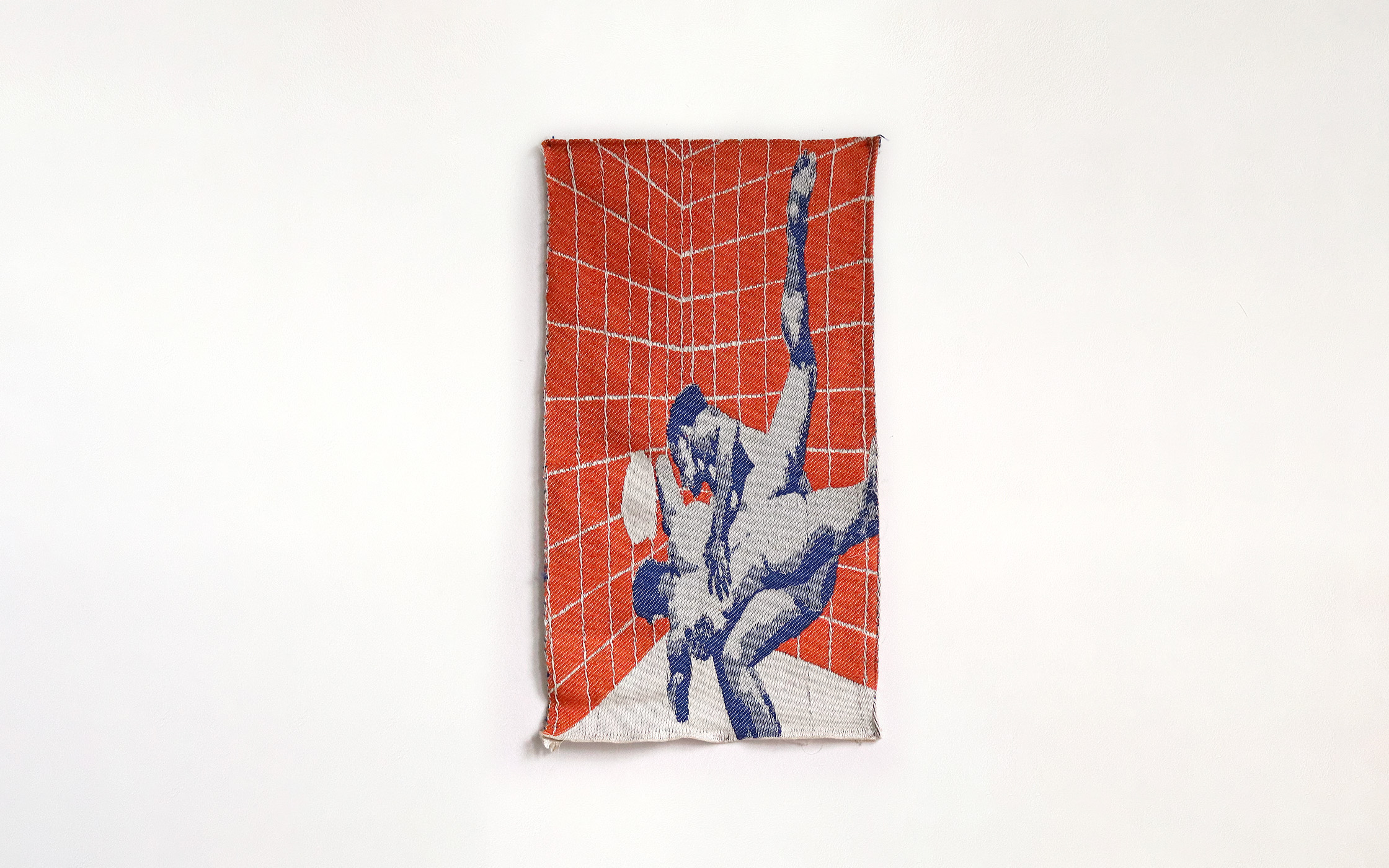2025
Galería Silvestre, Madrid.
Group Exhibition alongside Marta Barrenechea, Amparo de la Sota and Saar Scheerlings.
Curated by Vanessa Sanchez and Marta Barrenechea
The title of the show, which translates to ‘When we used to play’, focuses the viewer on the experimental act of making that is evident across the exhibited artworks. Speaking about textiles, the co-curator Vanessa Sanchez says ‘it has been linked to time, to gender, to belonging, to history, to place. But what happens if we remove textiles from this dialogue and simply let it be? What happens if we only talk about the act of making? Rosi Braidotti’s idea of the nomadic, hybrid and constantly transforming subject is relevant here; textiles are never static, always in transit, absorbing and transforming its materials and its meanings. And what if we relate textiles to play? An activity without a fixed purpose, which transforms as it develops, where experimentation and improvisation are essential, because otherwise it doesn’t exist.’
Weavings can be defined by their limitations; weavers work within a specific width restraint with a set amount of threads and the ability to arrange threads horizontally and vertically. Creating something soulful out of this mathematical setup is a challenge, and weaving an artwork can feel like battling against this grid. Working with areas of loose threads is my attempt to disrupt some of this grid logic and introduce some movement to the piece.
For this project, I set up an unbleached linen warp. I chose this yarn for its character: it’s both soft and strong and as I tried to wind the linen warp it would jump and spin in different directions as if it was also trying to escape the loom’s constraints. As I developed linen tests, my drawings began to change in response to how the linen behaved until I developed a dialogue between the linen and the image.
